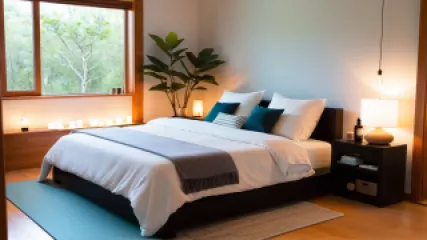Top 10 Relaxation Techniques for Sleep Disorders
Sleep disorders can significantly impact our overall well-being and quality of life. From insomnia to sleep apnea, these conditions can disrupt our sleep patterns and leave us feeling tired and unrefreshed. While there are various treatment options available, incorporating relaxation techniques into our bedtime routine can help improve sleep quality and promote better rest. In this article, we will explore the top 10 relaxation techniques for sleep disorders that you can try to achieve a more restful night's sleep.
1. Progressive Muscle Relaxation
Progressive Muscle Relaxation (PMR) is a technique that involves tensing and releasing different muscle groups to promote relaxation. Start by lying down in a comfortable position and focus on your breathing. Begin with your toes, tensing them for a few seconds before releasing the tension. Gradually work your way up through your legs, abdomen, arms, and finally to your face. This technique helps release physical tension and promotes a sense of calmness, making it easier to fall asleep.
2. Deep Breathing Exercises
Deep breathing exercises are a simple yet powerful technique to relax the body and mind. Find a quiet place and sit or lie down comfortably. Take a slow, deep breath in through your nose, allowing your abdomen to expand. Hold your breath for a few seconds, then exhale slowly through your mouth. Focus on your breath, letting go of any racing thoughts or distractions. Repeat this process for several minutes, allowing your body to enter a state of relaxation and tranquility.
3. Guided Imagery
Guided imagery involves using your imagination to create a peaceful and calming mental image. Find a quiet and comfortable space, close your eyes, and visualize yourself in a serene environment, such as a peaceful beach or a tranquil forest. Engage your senses by imagining the sound of waves crashing or the scent of blooming flowers. Allow yourself to fully immerse in this calming mental imagery, letting go of any stress or tension. Guided imagery can help shift your focus away from racing thoughts and create a sense of relaxation conducive to sleep.
4. Mindfulness Meditation
Mindfulness meditation is a practice that involves bringing your attention to the present moment without judgment. Find a quiet and comfortable space, sit upright, and close your eyes. Focus on your breath, observing each inhalation and exhalation without trying to change it. When your mind wanders, gently bring your attention back to your breath. Mindfulness meditation can help calm an overactive mind, reduce anxiety, and promote better sleep quality.
5. Aromatherapy
Aromatherapy utilizes the therapeutic properties of essential oils to promote relaxation and improve sleep quality. Lavender, chamomile, and sandalwood are popular essential oils known for their calming effects. Place a few drops of your preferred oil on a tissue or use a diffuser to fill your bedroom with a soothing scent. The aroma can help create a tranquil atmosphere, easing your mind and preparing you for a restful night's sleep.
6. Sleep Hygiene Practices
Establishing good sleep hygiene practices can contribute to better sleep quality. Maintain a consistent sleep schedule by going to bed and waking up at the same time every day. Create a relaxing bedtime routine that includes activities like reading a book or taking a warm bath. Ensure your sleep environment is conducive to rest by keeping it cool, dark, and quiet. Avoid stimulants like caffeine and electronic devices close to bedtime, as they can interfere with your sleep patterns.
7. White Noise
White noise refers to a consistent sound that can help drown out disruptive noises and create a soothing environment for sleep. You can use a white noise machine or listen to recordings of nature sounds, such as rain or ocean waves. The gentle background noise can help mask other sounds and promote a more peaceful and uninterrupted sleep.
8. Yoga and Stretching
Yoga and stretching exercises can help relax your body and prepare it for sleep. Engaging in gentle yoga poses or stretching before bedtime can release tension from your muscles and promote physical relaxation. Additionally, the focus on deep breathing during these exercises can also calm your mind and alleviate stress, making it easier to drift off to sleep.
9. Journaling
Journaling can be a helpful practice to clear your mind and release any lingering thoughts or worries before bed. Take a few minutes to write down your thoughts, feelings, or anything that may be keeping you awake. This process can help you gain perspective, process emotions, and create a sense of closure for the day, allowing your mind to relax and prepare for sleep.
10. Sleep-Friendly Environment
Creating a sleep-friendly environment is essential for promoting better sleep quality. Ensure your mattress and pillows are comfortable and supportive, allowing your body to relax fully. Use blackout curtains or an eye mask to block out any external light. Keep your bedroom cool, well-ventilated, and free from distractions. By optimizing your sleep environment, you can create the ideal conditions for a restful and rejuvenating night's sleep.
By incorporating these relaxation techniques into your bedtime routine, you can enhance your sleep quality and improve your overall well-being. Remember that everyone is unique, so experiment with different techniques to find what works best for you. If your sleep disorder persists or worsens, it is essential to consult with a healthcare professional for further evaluation and guidance. Prioritizing your sleep health is an investment in your overall health and happiness.






